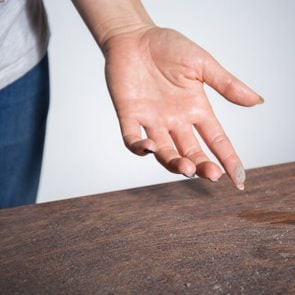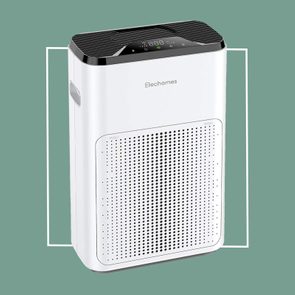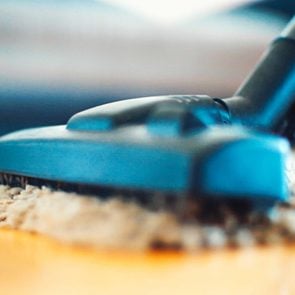6 HEPA Filter Vacuums for People With Allergies
Updated: Jun. 16, 2021
Keeping your house clean can prevent breathing troubles—but not if your vacuum releases allergens back into the air. Here's why a HEPA filter vacuum helps. Plus, the best ones to buy.
Our editors and experts handpick every product we feature. We may earn a commission from your purchases.
Getting rid of allergens
If you’re one of the 50 million Americans living with allergies, you’re probably doing everything you can to minimize your exposure and lessen your symptoms.
One of the best ways to do this is by ridding your home of dirt, dust, pet hair, mold, and other indoor allergens. After all, home isn’t just where the heart is—your lungs and airways live there as well, plus it’s where you spend most of your time.
And you want to make sure that you’re not miserable with allergy symptoms for the hours you’re eating, sleeping, working, and relaxing there.
The goal is to minimize the amount of allergens in the air. One of the quickest and easiest tools for removing these particles from your indoor air supply is a vacuum.
Allergens in the air
When allergens become airborne, there is a higher concentration of the particles to inhale, explains Sanjeev Jain, MD, a board-certified allergist and immunologist at Columbia Allergy.
“As these particles make contact with the mucous membranes within your nose, eyes, and airway, they can cause symptoms such as sneezing, runny nose, nasal congestion, cough, itchy eyes, watery eyes, and postnasal drip,” he says.
Sucking up allergens with a vacuum is a logical solution, but not all products do an A-plus job. In fact, some puff allergens back into the air.
“While a majority of the larger particles successfully remain within the vacuum’s canister or bag, there is potential for some of the smaller particles to be released into the air,” says Dr. Jain. “This problem is typically addressed by the use of filters—namely HEPA filters—within a vacuum to catch the smaller particles that escape from the canister and try to float back into the room that is being vacuumed.”
What is a HEPA filter?
High-efficiency particulate air (HEPA) filters are very common mechanical air filters that remove very small particles, including most allergens.
Vacuums with HEPA filters force air through mesh that traps particles so they don’t recirculate in the air.
“HEPA filters can remove 0.3 micrometer-sized particles, which covers approximately 99.97 percent of allergens, which would include common indoor allergens, such as pet dander, cockroach particles, dust mites, molds, and pollen that may have floated inside the home,” explains Dr. Jain.
Keep in mind: HEPA filters aren’t a one-time purchase kind of deal.
“Filters within vacuums will become clogged after a while, leaving the device less effective,” he says. “So it is important to buy a product that has replacement filters available or the ability to wash the filter.”
These days, most vacuums come equipped with HEPA filters, even those sold at affordable prices. Dr. Jain points out that some come with the ability to replace a standard filter with a HEPA filter.
But be warned: some vacuums come with a “HEPA-type” filter. These are not the same as a HEPA filter.
Even though both are mechanical filters, they vary in pricing, density, and filtration efficiency, says Robyn Kreiner, MD, a board-certified allergist at Strauss Allergy and Asthma on Long Island, New York.
True HEPA filters are more efficient at capturing small particles.
(This is how to cut down on indoor air pollution.)
What features should you look for in a HEPA filter vacuum cleaner?
When shopping for a vacuum that contains a HEPA filter, here are the main qualities you should look for, according to allergists.
It captures 99.97 percent of airborne particles
A true HEPA filter nabs 99.97 percent of airborne particles as small as 0.3 microns.
It’ll remove allergens such as dust mites, pet dander, mold, pollen, bacteria, and viruses, according to Dr. Kreiner.
A filter’s MERV rating (aka the minimum efficiency reporting value) indicates how well it can capture particles between 0.3 microns—considered the most problematic particle size to bypass a filter—and 10 microns. The higher the number, the better the filter is at trapping particles.
True HEPA filters have very high MERV ratings, between 17 and 20 MERV.
That’s why they’re so often used in HVAC systems, vacuum cleaners, air conditioners, and air purifiers.
It is sealed
A vacuum’s seal helps prevent particles from escaping. If that happens, the tool meant to clean your home could end up spreading allergens all over, explains Dr. Kreiner.
“The frame the filter is mounted in must be airtight so particles cannot get around the filter,” she says. “The collection chamber or bag must be carefully sealed and the exhaust from the motor must also be fully sealed and filtered.”
(Here are 10 things in your house that could be making you sick.)
It is certified
There are many third-party certifications that a vacuum can receive to ensure it lives up to certain standards.
The Carpet and Rug Institute (CRI), U.S. Green Building Council (LEED program), and the Allergy and Asthma Foundation of America (AAFA) all test vacuum performance to help people like you select machines.
“The CRI Seal of Approval has three levels of certification for vacuums—gold, silver, and bronze—based on the threshold for determining a vacuum’s soil removal, dust containment, and carpet preservation capabilities,” says Dr. Kreiner.
It works on multiple surfaces
Assuming that your home isn’t entirely wood, rug, or tile, it’s helpful to have a vacuum designed to clean multiple surfaces.
“Vacuums meant for hard surfaces only may not have enough power or a long enough brush to help loosen and collect particles that can be found in the crevices of the carpet,” says Dr. Jain. “The multi-surface vacuums typically have settings you can adjust to fit the surface you are trying to clean.”
It has a vacuum bag
For people with allergies, the rule of thumb is to opt for a vacuum with a bag, not a bag-less model.
Bags help you avoid releasing particles into the air, which will make the vacuuming process less irritating.
Models without bags, on the other hand, can expose allergens back into the air as you empty the chamber.
The best HEPA filter vacuums
Ready to shop for HEPA filter vacuums? These are the ones allergists recommend.

Dyson Ball Multi Floor Origin Vacuum Cleaner
Most Dyson products have been certified asthma and allergy friendly by the Asthma and Allergy Foundation of America and are designed to work on multiple surface types, according to Dr. Jain.
It’s hard to go wrong with any Dyson products, he says. For an affordable upright model, he recommends the Dyson Ball Multi Floor Origin, which uses a HEPA filter to trap allergens.
“This is a reliable product that will help to reduce exposure to allergen particles while cleaning all carpeted and hard floors within your home,” he says.
And while it has a cord, there’s 35 feet of length with which to move around your home.

LG CordZero A9 Kompressor Stick Vacuum
Another great option for a vacuum that’s certified asthma and allergy-friendly, contains a HEPA filter, and comes highly recommended by Dr. Jain is the LG’s CordZero A9 Kompressor.
Bonus: It doesn’t have a cord, so it’s less hassle. It comes with a portable charging stand.
“This lightweight vacuum can remove allergens from your home and help you reach all the nooks and crannies without a cord holding you back,” he says.
(These smart strategies help rid your home of allergies.)

Hoover WindTunnel 2 Whole House Rewind Upright Vacuum
This HEPA filter vacuum cleaner from Hoover may have a cord, but it offers 25 feet of freedom to remove dust particles and other allergens from all areas of your home. It utilizes two channels of suction to remove dirt and debris and features a multi-floor brush that works on carpets as well as hardwood floors.
It’s also ideal for pet owners, thanks to the filter’s odor-absorbing carbon layer.

Kenmore Intuition Bagged Upright Vacuum
Weighing in at only 14 pounds, this vacuum is lightweight and versatile—with a button press, the body lifts away from the floor nozzle, making it easier to clean stairs.
This Kenmore vacuum has a HEPA filter and a no-touch bag technology that eliminates the pesky process of removing a full dust cup with your hands. It comes with a five-year warranty.

Vacmaster Professional 8-Gallon Certified Hepa Vacuum
This HEPA filter vacuum cleaner from Vacmaster is nearly indestructible, thanks to its eight-gallon, crush-proof polypropylene tank.
It features an industrial motor, 30-foot cord, and 10-foot hose. It can vacuum up both wet and dry materials.
(Learn how a messy house can make you sick.)

Dyson V15 Detect Cordless Vacuum Cleaner
If you’re looking to splurge on a HEPA filter vacuum with all the bells and whistles, Dr. Jain recommends this Dyson vacuum, which is the company’s most powerful cordless option.
“This vacuum has a laser to help you see all the microscopic dust and dirt particles on your floor to guide you in cleaning your home,” he says.
It’s designed for whole-home cleaning and can tackle all surfaces. Plus, it has an LCD display screen that shows you run time and performance. It comes with a docking and charging station.
Next, learn more about what pollutes the air inside your home.


















